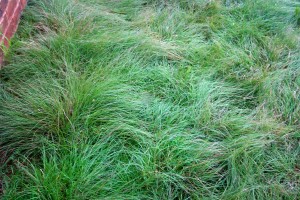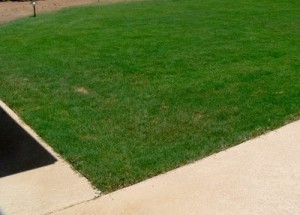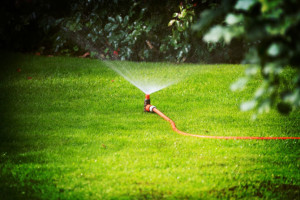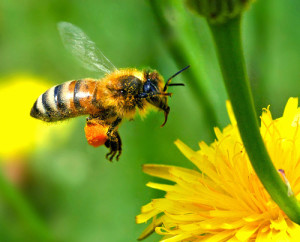Latest Posts
- Have a purpose when backyardingAugust 5 2021
- Study: Time outside alters our microbiomeAugust 4 2021
- Happy National Mutt Day from Mo-MoJuly 27 2021
- New home? Avoid these common mistakes in your yard.July 26 2021
- Infographic: Plan a backyard staycation this summerJuly 22 2021
Categories
Archive
April 1st
No foolin’! You can have a lawn, even in drought.

It’s April Fool’s Day, and it seems like the perfect time to remind you that you can have a lawn, even in a drought. And we’re not pulling your leg!
There are options for managed landscapes – even in dry climates – that do not include ripping out your lawn. In fact, deadening landscapes with rocks, mulch, pavement, hardscapes and plastic grass actually creates more environmental problems than it solves.
Living landscapes help the drought, while at the same time addressing other environmental issues. Lawns reduce heat, improve air quality, decrease noise pollution, absorb carbon dioxide, generate oxygen, support biodiversity and wildlife, control soil erosion and capture and filter rainfall and runoff.
The key to being a good environmental steward like TurfMutt is choosing the right turfgrass. Hundreds of varieties of turfgrass exist, and some of them – like buffalo and Bermuda – Do well in drought conditions. When established, these grasses require very little water and will also survive foot traffic, children’s play and pets.

But there’s more! We must stop believing the myth that all plants have to stay green all the time. As water becomes less available, the grass will slow down, go dormant and turn brown. But that’s okay, because turfgrass is incredibly resilient. It will green up again when the rain comes back.

Remember, too much water is actually bad for grass. Overwatering causes the grass roots to grow horizontally, rather than vertically. But with less water, the grass has to work harder and will grow its roots deeper into the soil in search of moisture. This helps it do a better job of trapping carbon and releasing oxygen.

And grass isn’t the only option for greening your landscape. You should also incorporate native plants and other drought-resistant species that can survive in low-water conditions. Also, add in native pollinator plants that provide food and habitat for local bees, butterflies, hummingbirds and other animals and insects.

Don’t let “lawn” become four-letter-word in your community. Common sense tells us options are available. Even in a drought you can have a lawn; you just have to choose the right lawn.
Get more tips and information at www.opei.org/stewardship.





